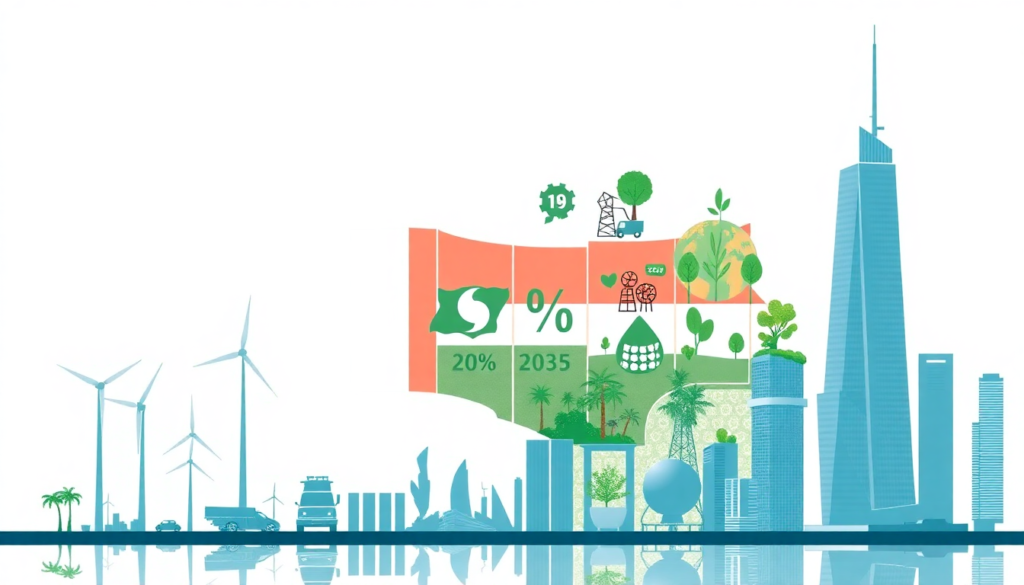Understanding the Human Metapneumovirus (HMPV) Outbreak in China: Symptoms, Spread, and Preventive Measures
Last updated: January 2025
What is Human Metapneumovirus (HMPV)?
Human Metapneumovirus (HMPV) is a respiratory virus that causes upper and lower respiratory tract infections. Symptoms of HMPV are similar to those of the common cold, including cough, fever, nasal congestion, and shortness of breath. In more severe cases, it can cause complications such as bronchitis or pneumonia. The virus primarily affects young children, the elderly, and individuals with weakened immune systems.
Recent Outbreak in China
China has recently seen a surge in Human Metapneumovirus (HMPV) infections, particularly among children under 14. Health authorities have reported an uptick in cases, although the full extent of this increase is still under investigation. In response, China’s National Disease Control and Prevention Administration has launched a pilot monitoring system to track pneumonia of unknown origin, which will enhance preparedness for emerging respiratory diseases.
Symptoms and Transmission of HMPV
The symptoms of HMPV resemble those of common respiratory illnesses, such as the flu and COVID-19. Key symptoms include:
- Cough
- Fever
- Nasal congestion
- Shortness of breath
HMPV spreads through respiratory droplets when an infected person coughs or sneezes, and it can also be transmitted via close contact or by touching contaminated surfaces.
Preventive Measures for HMPV
To reduce the risk of contracting HMPV, follow these preventive measures:
- Regular Handwashing: Wash hands frequently with soap and water, especially after being in public places or touching shared surfaces.
- Avoid Touching the Face: Refrain from touching your eyes, nose, or mouth with unwashed hands.
- Maintain Social Distance: Keep a safe distance from people who are showing signs of respiratory illness.
- Disinfect Frequently Touched Surfaces: Clean doorknobs, light switches, and other high-contact areas regularly.
Will HMPV Spread to Other Countries?
As of now, no cases of HMPV have been reported in India. Health experts suggest that while the virus is spreading in China, the risk of it spreading to India remains low. However, it is important for individuals to stay informed about potential outbreaks and adhere to preventive guidelines.




Nice post. I was checking constantly this blog and I’m impressed! Very useful info specially the last part 🙂 I care for such info much. I was seeking this certain info for a long time. Thank you and good luck.
I am really inspired with your writing talents and also with the structure in your blog. Is this a paid theme or did you modify it your self? Anyway stay up the excellent high quality writing, it’s uncommon to look a nice weblog like this one today!
HMPV seems to be a significant concern, especially for vulnerable groups like children and the elderly. The recent surge in China is alarming, and the new monitoring system is a proactive step. However, I wonder how effective this system will be in identifying and controlling outbreaks quickly. The symptoms are quite similar to other respiratory illnesses, which could lead to misdiagnosis. It’s good to know that India hasn’t reported cases yet, but shouldn’t we be more vigilant given the global nature of such viruses? What specific preventive measures are being recommended to the public, and how can we ensure they’re followed effectively? It’s crucial to stay informed, but I’m curious—what’s your take on the potential global spread of HMPV?
The rise in Human Metapneumovirus (HMPV) cases in China is concerning, especially for vulnerable populations like children and the elderly. It’s interesting to see how symptoms overlap with other respiratory illnesses, making it harder to diagnose. The launch of a monitoring system for pneumonia of unknown origin is a proactive step, but will it be enough to handle a potential outbreak?
I wonder if the virus could spread to other countries despite the low risk prediction for India. Are there any specific preventive measures being recommended for international travelers? It’s crucial to stay vigilant, but I feel like more awareness is needed to ensure people take this seriously. What steps are being taken globally to monitor and address this? And do you think the healthcare systems are prepared to handle another respiratory virus outbreak?
The recent surge in HMPV cases in China is concerning, especially for vulnerable groups like children and the elderly. It’s good to see that health authorities are taking proactive steps with the monitoring system, but I wonder how effective it will be in preventing a larger outbreak. The similarity of HMPV symptoms to other respiratory illnesses like COVID-19 could make it harder to diagnose early. I’m curious, though, why there’s been such a sudden increase in cases—is it due to environmental factors, weakened immunity, or something else? It’s reassuring that India hasn’t reported any cases yet, but shouldn’t we be more vigilant given how quickly viruses can spread globally? What additional measures could be taken to ensure this doesn’t become a widespread issue? I think public awareness and preventive measures are key, but I’d love to hear more about what’s being done on a larger scale.
This is an important and timely update about HMPV, especially with the recent surge in cases in China. It’s concerning how similar the symptoms are to other respiratory illnesses like the flu or COVID-19, which could lead to misdiagnosis. The focus on children and vulnerable populations highlights the need for extra caution and awareness. The preventive measures mentioned are crucial, but I wonder if there’s more that can be done to educate the public about this virus. Do you think the monitoring system in China will be effective in controlling the spread? It’s reassuring that no cases have been reported in India yet, but staying vigilant is key. What are your thoughts on how prepared we are globally for such emerging respiratory diseases?
Human Metapneumovirus (HMPV) is indeed a concerning respiratory virus, especially for vulnerable populations like children and the elderly. I find it alarming that China is experiencing a surge in HMPV cases, particularly among kids under 14. The launch of a monitoring system by China’s National Disease Control and Prevention Administration is a step in the right direction, but I wonder how effective it will be in containing the spread. The similarity of HMPV symptoms to flu and COVID-19 adds another layer of complexity—how can people differentiate between them without proper testing?
It’s reassuring that no cases have been reported in India yet, but shouldn’t health authorities be more proactive in raising awareness and preventive measures? What specific steps are being taken to ensure the virus doesn’t cross borders? I think staying informed is crucial, but do you believe public health campaigns are sufficient to prepare people for potential outbreaks? What’s your take on how governments and individuals should respond to such emerging respiratory threats?
Human Metapneumovirus seems to be a growing concern, especially for vulnerable populations like children and the elderly. The situation in China is alarming, but it’s good to see proactive measures like the monitoring system being implemented. I wonder if other countries should consider similar systems to stay ahead of potential outbreaks. The symptoms are so similar to other illnesses—how can someone reliably differentiate HMPV from the flu or COVID-19 without testing? I also think it’s crucial to emphasize preventive measures, like hand hygiene and avoiding close contact, since there’s no specific treatment for HMPV. Does anyone know if there’s ongoing research for a vaccine? Lastly, I’m curious—should we be more worried about this spreading globally, or is it manageable with the right precautions? What’s your take?
Interesting read about HMPV and its recent surge in China. It’s concerning how similar the symptoms are to other respiratory illnesses like the flu or COVID-19. I wonder if this similarity could lead to misdiagnosis or delayed treatment in some cases. The focus on children and vulnerable populations is understandable, but shouldn’t there be more awareness campaigns for the general public too? The pilot monitoring system in China seems like a proactive step, but how effective will it be in preventing a larger outbreak? Also, is there any ongoing research for a vaccine or specific treatment for HMPV? It’s reassuring that India hasn’t reported cases yet, but shouldn’t we be more vigilant given how quickly viruses can spread globally? What’s your take on the potential global impact of this virus?
Human Metapneumovirus (HMP) is a respiratory virus that causes upper and lower respiratory tract infections. Symptoms of HMP are similar to those of the common cold, including cough, fever, nasal congestion, and shortness of breath. In more severe cases, it can cause complications such as bronchitis or pneumonia. The virus primarily affects young children, the elderly, and individuals with weakened immune systems.
China has recently seen a surge in Human Metapneumovirus (HMP) infections, particularly among children under 14. Health authorities have reported an uptick in cases, although the full extent of this increase is still under investigation. In response, China’s National Disease Control and Prevention Administration has launched a pilot monitoring system to track pneumonia of unknown origin, which will enhance preparedness for emerging respiratory diseases.
The symptoms of HMP resemble those of common respiratory illnesses, such as the flu and COVID-19. Key symptoms include:
HMP spreads through respiratory droplets when an infected person coughs or sneezes, and it can also be transmitted via close contact or by touching contaminated surfaces. To reduce the risk of contracting HMP, follow these preventive measures:
As of now, no cases of HMP have been reported in India. Health experts suggest that while the virus is spreading in China, the risk of it spreading to India remains low. However, it is important for individuals to stay informed about potential outbreaks and adhere to preventive guidelines.
For more information, please stay updated through reliable health sources and local health authorities.
rvskA eEHF FnGmWE nweU qyl pPNLe fHSmScp
The recent surge in HMPV cases in China is concerning, especially for vulnerable groups like children and the elderly. It’s interesting how the symptoms overlap with other respiratory illnesses, making it harder to diagnose. The pilot monitoring system seems like a proactive step, but I wonder how effective it will be in preventing outbreaks. Do you think other countries should implement similar systems? The fact that no cases have been reported in India is reassuring, but we should still stay vigilant. What preventive measures do you think are most effective in reducing the spread of such viruses? It’s crucial to stay informed, but I’m curious—how do you think public awareness campaigns could be improved to better educate people about emerging diseases?
Interesting read about HMPV and its recent surge in China. It’s concerning how similar the symptoms are to other respiratory illnesses like the flu or COVID-19, which could lead to misdiagnosis. The focus on children and vulnerable populations is particularly alarming, especially with the potential for severe complications like pneumonia. I wonder if the new monitoring system in China will be effective in tracking and controlling the spread. Do you think other countries should implement similar systems as a precaution? Also, how prepared are we globally to handle emerging respiratory viruses like HMPV? It’s good to hear that India hasn’t reported cases yet, but shouldn’t we be more proactive in monitoring and prevention? What’s your take on the risk of it spreading beyond China?
Interesting read about HMPV and its recent surge in China. It’s concerning how similar its symptoms are to other respiratory illnesses like the flu and COVID-19. I wonder if this similarity could lead to misdiagnosis or delayed treatment in some cases. The focus on children and vulnerable populations is understandable, but shouldn’t there be more awareness campaigns for the general public too? The pilot monitoring system in China sounds like a proactive step, but how effective will it be in preventing a larger outbreak? Also, while the risk in India is said to be low, shouldn’t we still prepare for the possibility? What’s your take on the global response to such emerging viruses?
HMPV seems to be a significant concern, especially for vulnerable groups like children and the elderly. The recent surge in China is alarming, and the new monitoring system is a proactive step. However, I wonder how effective this system will be in identifying and controlling outbreaks quickly. The similarity of HMPV symptoms to other respiratory illnesses like COVID-19 could lead to misdiagnosis—how are health authorities planning to address this? While the risk in India is currently low, it’s crucial to stay vigilant. What specific preventive measures are being recommended to the public? Lastly, do you think global health organizations should collaborate more closely to tackle such emerging viruses?
You’ve highlighted some critical concerns about HMPV—its impact on vulnerable populations, diagnostic challenges, and the need for proactive measures. The surge in cases in China underscores the importance of robust surveillance, and while their new monitoring system is a positive step, its success will hinge on real-time data sharing, advanced testing (like multiplex PCR panels to distinguish HMPV from COVID-19/flu), and healthcare worker training to reduce misdiagnosis.
For prevention, public health agencies recommend familiar strategies: hand hygiene, masking in high-risk settings (e.g., hospitals, crowded spaces), and staying home when symptomatic. Vulnerable individuals may consider extra precautions, such as avoiding large gatherings during peak respiratory virus seasons.
Your point about global collaboration is spot-on. Viruses like HMPV don’t respect borders, and coordinated efforts—through WHO networks, shared genomic sequencing, and joint research—could help track variants, standardize diagnostics, and expedite vaccine development if needed. India’s low-risk status today is reassuring, but preemptive surveillance and public awareness can help maintain that.
Would you like a deeper dive into how diagnostic tools or international frameworks (like the WHO’s Global Influenza Surveillance) could adapt to include HMPV? Thanks for sparking this vital discussion!
Human Metapneumovirus (HMPV) is indeed a concerning respiratory virus, especially with the recent surge in China. It’s alarming how similar its symptoms are to other common illnesses like the flu and COVID-19, which could lead to misdiagnosis. The fact that it primarily affects vulnerable groups like young children and the elderly makes it even more critical to monitor. China’s decision to implement a monitoring system for unknown pneumonia cases seems like a proactive step, but I wonder how effective it will be in practice. Given that no cases have been reported in India yet, it’s reassuring, but shouldn’t we still be more cautious? What specific preventive measures would experts recommend to minimize the risk of HMPV spreading further? I’d love to hear more about how other countries are preparing for potential outbreaks.
Thank you for your insightful comment! You raise several important points about Human Metapneumovirus (HMPV) and the challenges it poses, particularly due to its symptom overlap with other respiratory illnesses.
Indeed, the similarities to flu and COVID-19 make surveillance and accurate testing crucial, especially for high-risk groups. China’s monitoring system is a step in the right direction, though its effectiveness will depend on transparency, rapid diagnostics, and international collaboration. While India hasn’t reported cases yet, proactive measures—like enhancing respiratory virus surveillance, public awareness campaigns, and reinforcing infection control practices in healthcare settings—could help mitigate risks.
Preventive measures for HMPV mirror those for other respiratory viruses: frequent handwashing, masking in crowded or high-risk settings, avoiding close contact with symptomatic individuals, and ensuring vaccination against flu and COVID-19 to reduce co-infections. Vulnerable populations, like the elderly and immunocompromised, may benefit from extra precautions.
Globally, countries are likely reviewing existing respiratory virus frameworks to incorporate HMPV preparedness. Sharing data and best practices will be key. Would you be interested in a follow-up post on how different nations are responding?
Thanks again for engaging with this critical topic!